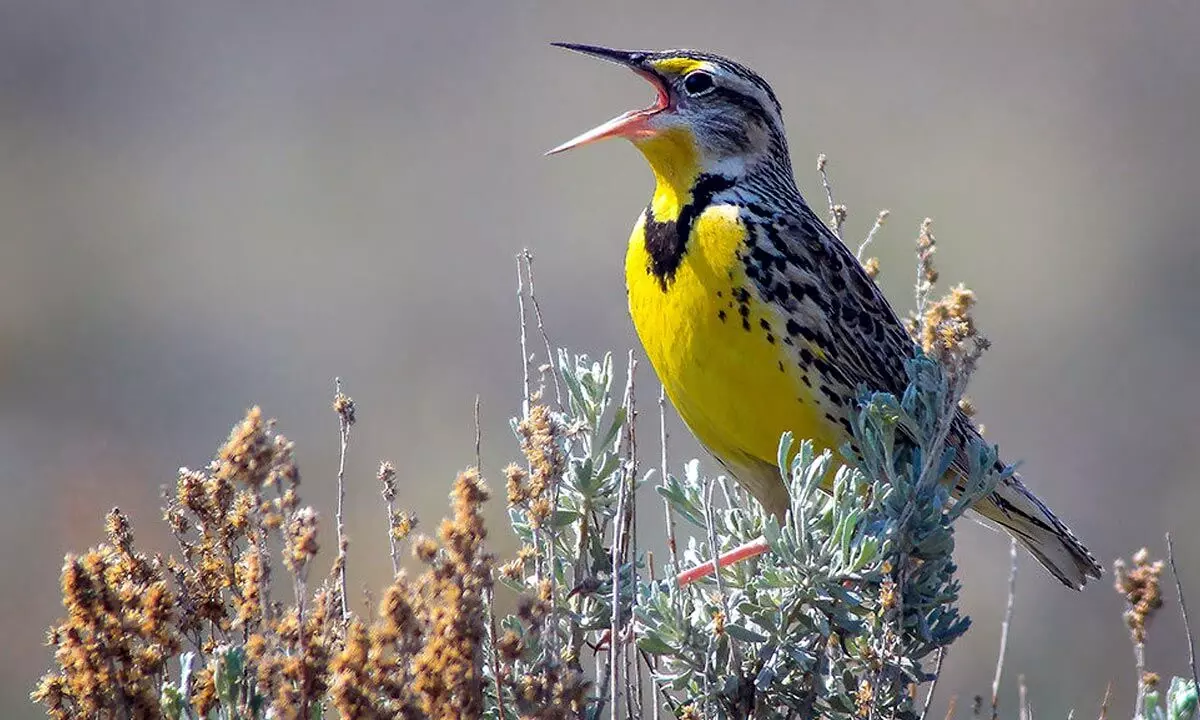Why declining birds' population should worry all of us
If the waning birds’ population is any indication of climate change, the world has reasons to be worried about. All recent studies clearly indicate that the global bird populations have steadily declined for the last three decades. This is alarming both because of the key role they play in ecosystems and because their trends signal broader environmental losses.
image for illustrative purpose

If the waning birds' population is any indication of climate change, the world has reasons to be worried about. All recent studies clearly indicate that the global bird populations have steadily declined for the last three decades. This is alarming both because of the key role they play in ecosystems and because their trends signal broader environmental losses. The Annual Review of Environment and Resources, a study led by Manchester Metropolitan University and released over the last weekend, suggests that the continued growth of the human footprint on the natural world – which has led to the degradation and loss of natural habitats as well as direct overexploitation of many species – are the key threats to avian biodiversity. The same thing applies to India as well.
Consider what Dr Ashwin Viswanathan, a leading researcher at the Nature Conservation Foundation, India, has to say: If unique ecosystems like grasslands are to retain their diverse birdlife into the future, both Governments and research groups must prioritize such landscapes and their inhabitants for conservation and ensure that they do not become plantations or woodlands. In order to save our birds and their habitats, facilitating easy, focused and extensive research of threatened species is the key. The more we understand about these birds, the better our chance of saving them.
Mind you that climate change is always identified as an emerging driver of bird population declines across the world.
As high as 48 per cent of existing bird species worldwide are known or suspected to be undergoing population declines. This is compared to trends in 39 per cent of species remaining stable, just 6 per cent showing increasing population trends, and 7 per cent still unknown.
The changes in avian biodiversity are palpable and more so using data from the International Union for Conservation of Nature's Red List that clearly reveals the changes in fortunes of the globe's 11,000 bird species.
It is pertinent to mention here that the avian diversity peaks globally in the tropics and it is there that we also find the highest richness of threatened species. We know a lot less about the fortunes of tropical bird species than we do about temperate ones, but we are now witnessing the first signs of a new wave of extinctions of continentally-distributed bird species which has followed the historic loss of species on islands like the Dodo.
Ironically, alongside tropical forests, natural grasslands emerge as a habitat which is particularly threatened, with strong declines in grassland birds observed in North America, Europe and India.
Initially a loss of nearly 3 billion birds in North America alone was noticed. Subsequently it was more disappointing to find the same patterns of population declines and extinction occurring globally. Because birds are highly visible and sensitive indicators of environmental health, we know their loss signals a much wider loss of biodiversity and threats to human health and well-being.
Talking about India, in particular, nearly 80 per cent of the 867 species of birds' population in India has been on decline in the past five years, according to a report to which over 15,500 birdwatchers from across the country contributed. It also expressed high concern for conservation of 101 species.
Quite interestingly, while the number of birds in India is dwindling, the number of pet birds are on the rise. The population of pet birds in India amounted to over 150 thousand in the year 2018, which is forecast to reach over 170 thousand by the end of year 2023. But this is not going to serve any purpose. If we are serious and sincere about ushering in a nature-positive future, we all must refocus on saving on our natural heritage.

